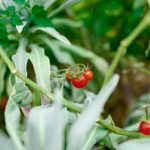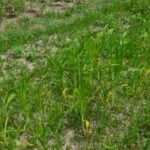Georgia fall vegetable gardening offers an excellent opportunity for residents to enjoy an abundance of fresh, homegrown produce. The mild temperatures and favorable growing conditions in Georgia make it an ideal location for cultivating a variety of vegetables during the autumn season. Whether you are a seasoned gardener or just starting out, the diverse range of crops that thrive in Georgia’s fall climate ensures a rewarding gardening experience.
When it comes to successful fall vegetable gardening in Georgia, proper planning and preparation are essential. By understanding the unique climate and soil conditions of the region, gardeners can select the best vegetables to plant and implement practices that promote healthy growth. From cool-season crops like broccoli and carrots to leafy greens and root vegetables, there is no shortage of options for planting a bountiful fall garden in Georgia.
In this guide, we will explore the best vegetables to plant in Georgia during the fall months, how to prepare your garden for planting, tips for ensuring a successful harvest, as well as common pests and diseases to watch out for. With a little bit of knowledge and effort, you can enjoy a fruitful fall vegetable garden that provides nutritious and delicious produce throughout the season.
Let’s dive into the world of Georgia fall vegetable gardening and discover all that this vibrant season has to offer.
Best Vegetables to Plant in Georgia in the Fall
When it comes to Georgia fall vegetable gardening, it is essential to choose the right vegetables that thrive in the climate and soil conditions of the region. Here are some of the best vegetables to plant in Georgia during the fall season:
- Broccoli: Broccoli is a cool-season vegetable that does well in Georgia’s fall weather. It thrives in temperatures between 45°F and 75°F, making it an ideal crop for fall planting.
- Carrots: Carrots are another great vegetable to plant in a Georgia fall garden. They can withstand cold temperatures and develop a sweeter flavor when grown in cooler weather.
- Kale: Kale is a hardy green that grows well in Georgia’s fall climate. It can withstand light frosts and actually improves in taste after being exposed to chilly temperatures.
Planting these vegetables in your Georgia fall garden will not only provide you with fresh produce throughout the season but will also ensure a successful and bountiful harvest.
It is important to note that proper care and maintenance are essential for these vegetables to thrive. Make sure to follow best practices for watering, fertilizing, and protecting your plants from pests and diseases. By selecting the right vegetables and providing them with proper care, you can enjoy a successful fall vegetable garden in Georgia.
Preparing Your Garden for Fall Planting
Clearing Out Summer Vegetation
Before you start planting your fall vegetables, it is essential to clear out any remaining summer vegetation from your garden beds. Remove any dead or diseased plants, weeds, and debris to ensure a clean slate for your new crops. This will help prevent the spread of pests and diseases that can hinder the success of your fall garden.
Amending Soil for Fall Planting
In Georgia, fall vegetable gardening success often hinges on the quality of your soil. Before planting, consider testing your soil to determine its nutrient levels. Based on the results, you may need to amend your soil with organic matter such as compost or aged manure to improve its structure and fertility. Ensure that your soil drainage is adequate for healthy plant growth by addressing any issues with compaction or poor drainage.
Planning Your Garden Layout
As you prepare for fall planting in Georgia, take some time to plan out your garden layout. Consider factors such as sun exposure, spacing requirements for each vegetable type, and potential companion planting options. By strategizing in advance, you can maximize the use of space in your garden beds and promote healthier plant growth overall. Don’t forget to consider vertical gardening options if space is limited in your garden area.
Understanding the Climate and Soil Conditions in Georgia for Fall Gardening
One of the key factors to consider when planning your fall vegetable garden in Georgia is understanding the climate and soil conditions unique to the region. Georgia experiences a moderate climate in the fall, with cooler temperatures compared to the scorching summer months. This makes it an ideal time for certain vegetables to thrive in the garden.
In terms of soil conditions, Georgia offers a variety of soil types, including clay, sandy loam, and silt loam. It is crucial to assess your specific soil type before planting to ensure that your vegetables have the best chance of success. Amending your soil with organic matter such as compost can help improve soil structure and fertility, providing a healthy environment for your plants to grow.
Additionally, being aware of the average first frost date in Georgia is essential for planning your fall garden. Knowing when colder temperatures may arrive will help you determine which vegetables should be planted earlier in the season to ensure a successful harvest. By understanding the climate and soil conditions in Georgia for fall gardening, you can make informed decisions on what vegetables to grow and how to best care for them throughout the season.
Tips for Successful Fall Vegetable Gardening in Georgia
Fall vegetable gardening in Georgia comes with its own set of challenges and considerations, but with the right tips and techniques, you can have a successful harvest. Here are some key guidelines to keep in mind for a productive fall garden in Georgia.
Timing Is Key
One of the most important factors in successful fall vegetable gardening in Georgia is timing. Planting too early or too late can affect the growth and yield of your crops. Make sure to consult a planting calendar specific to Georgia to determine the best times for sowing seeds or transplanting seedlings for different vegetables.
Choose the Right Varieties
Not all vegetable varieties are suited for fall planting in Georgia. Select varieties that are known to perform well in the region’s specific climate and soil conditions during autumn. Look for quick-maturing varieties that can reach harvest before the first frost hits.
Maintain Proper Soil Moisture
In Georgia’s warmer fall temperatures, it’s important to keep your garden adequately watered. However, be cautious not to overwater as this can lead to issues such as root rot. Consider using mulch around plants to help retain moisture in the soil and reduce evaporation.
By following these tips, you can increase your chances of a bountiful fall harvest in your Georgia vegetable garden. Remember to stay vigilant for any signs of pests or diseases, and regularly monitor your plants’ progress as they grow throughout the season. With proper planning and care, you can enjoy a thriving fall garden full of fresh, homegrown produce.
Common Pests and Diseases to Watch Out for in Georgia Fall Gardens
When embarking on Georgia fall vegetable gardening, it is essential to be aware of the potential pests and diseases that can affect your garden. By being proactive and vigilant, you can effectively mitigate these threats and ensure a successful harvest. Here are some common pests and diseases to watch out for in Georgia fall gardens:
- Aphids: These small, soft-bodied insects feed on plant sap and can quickly multiply, causing damage to your crops. Look out for clusters of aphids on the undersides of leaves and treat them with insecticidal soap or neem oil.
- Whiteflies: These tiny insects can quickly infest your garden, leaving a sticky residue on plants and causing yellowing and wilting. Introduce natural predators like ladybugs or use sticky traps to control their population.
- Powdery Mildew: This fungal disease thrives in humid conditions and appears as a white powdery substance on leaves. Ensure good air circulation in your garden by spacing plants properly and apply fungicide as needed.
In addition to these pests and diseases, Georgia fall vegetable gardens may also be susceptible to other threats such as caterpillars, spider mites, root rot, and bacterial wilt. Regularly inspecting your plants for signs of infestation or disease is crucial in early detection and management. Implementing proper cultural practices such as crop rotation, using clean tools, and providing adequate irrigation can help prevent these issues from occurring.
Remember that prevention is key when it comes to managing pests and diseases in your Georgia fall garden. By practicing good garden hygiene, monitoring the health of your plants regularly, and taking prompt action at the first sign of trouble, you can protect your crops and enjoy a bountiful harvest at the end of the season. Stay informed about specific pests common in your area to tailor an effective pest management plan for your fall vegetable garden.
Harvesting and Storing Fall Vegetables in Georgia
Georgia fall vegetable gardening provides a bountiful harvest for those who have carefully tended to their gardens throughout the season. As the cooler temperatures set in, it is crucial to understand when and how to harvest your fall vegetables to ensure maximum flavor and freshness. One of the key benefits of harvesting in the fall is the extended harvest window due to milder weather conditions compared to summer.
When it comes to storing fall vegetables in Georgia, proper handling is essential to preserve their quality for as long as possible. Root vegetables such as carrots, beets, and turnips can be stored in a cool, dark place with high humidity to prevent them from drying out. Leafy greens like kale and lettuce should be kept in the crisper drawer of the refrigerator wrapped in a damp paper towel to maintain crispness.
For longer storage, many fall vegetables can be preserved through methods such as pickling, fermenting, or freezing. This allows Georgia gardeners to enjoy their homegrown produce well into the winter months. By incorporating these techniques into your fall vegetable gardening routine, you can make the most of your harvest and savor the flavors of autumn throughout the year.
| Vegetable | Recommended Method of Storage |
|---|---|
| Carrots | Cool, dark place with high humidity |
| Kale | Crisper drawer of the fridge wrapped in damp paper towel |
| Beets | Cool, dark place with high humidity or pickling |
Fall Gardening Events and Resources in Georgia
Georgia offers a variety of fall gardening events and resources for enthusiasts looking to enhance their skills and knowledge in cultivating a successful garden during the autumn months. From workshops to farmers markets, there are plenty of opportunities to learn more about Georgia fall vegetable gardening and connect with like-minded individuals in the community.
One popular event for fall gardeners in Georgia is the “Fall Gardening Workshop” hosted by the Georgia Master Gardener Extension Volunteers. This workshop typically covers topics such as soil preparation, plant selection, and pest management specifically tailored for fall gardening in Georgia. Attendees have the chance to interact with experienced gardeners, ask questions, and even participate in hands-on activities to improve their gardening techniques.
In addition to workshops, many counties in Georgia host fall gardening festivals that showcase local produce, gardening products, and demonstrations on various aspects of fall vegetable gardening. These festivals not only provide a platform for discussing best practices but also offer a great opportunity to explore different varieties of vegetables that thrive in Georgia’s climate during the fall season.
| Fall Gardening Events | Location |
|---|---|
| Fall Gardening Workshop | Hosted by Georgia Master Gardener Extension Volunteers |
| Fall Gardening Festival | Various counties across Georgia |
Conclusion and Final Thoughts on Georgia Fall Vegetable Gardening
As the seasons change and summer transitions into fall, Georgia gardeners have a unique opportunity to continue their gardening adventures with the bountiful harvests of fall vegetables. Georgia fall vegetable gardening offers a rich variety of crops that thrive in the cooler temperatures and milder climate, providing an opportunity for gardeners to extend their growing season well into the autumn months.
With careful planning and preparation, gardeners in Georgia can enjoy a successful fall vegetable garden by selecting the best-suited crops for this time of year. From hearty root vegetables like carrots and beets to leafy greens like kale and spinach, there are plenty of options to choose from when deciding what to plant in your fall garden.
By understanding the climate and soil conditions specific to Georgia, gardeners can ensure that their plants have the best chance at thriving during the fall season.
In conclusion, Georgia fall vegetable gardening is a rewarding experience that allows gardeners to connect with nature, enjoy fresh produce, and continue their passion for gardening well beyond the summer months. By following the tips and guidelines outlined in this article, you can create a successful fall garden filled with delicious harvests that will nourish your body and soul.
So roll up your sleeves, grab your gardening tools, and get ready to embrace the beauty of autumn in your very own Georgia fall vegetable garden.
Frequently Asked Questions
What Fall Vegetables Grow Best in Georgia?
Fall vegetables that grow best in Georgia include kale, carrots, broccoli, cauliflower, collard greens, and Brussels sprouts. These crops thrive in the cooler temperatures and shorter days of the fall season in Georgia.
When Should I Start My Fall Vegetable Garden?
It is recommended to start your fall vegetable garden in Georgia around late summer or early fall, typically in August or September. This timing allows for the vegetables to establish strong roots before the colder weather sets in, ensuring a successful harvest.
When Should I Start My Winter Garden in Georgia?
In Georgia, it is best to start your winter garden around late summer or early fall as well, similar to the timing for a fall vegetable garden. This allows the plants to establish themselves before winter arrives and ensures they have enough time to mature before colder temperatures set in.

If you’re looking to get into vegetable gardening, or are just looking for some tips on how to make your current garden better, then you’ve come to the right place! My name is Ethel and I have been gardening for years. In this blog, I’m going to share with you some of my best tips on how to create a successful vegetable garden.





